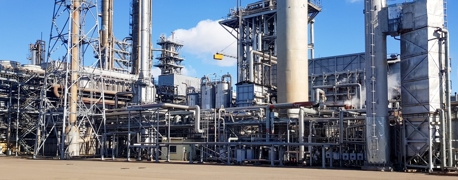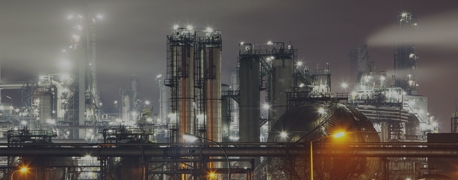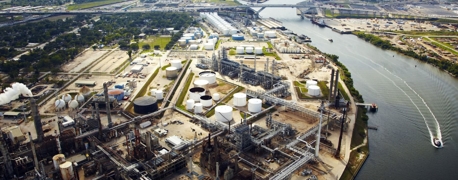Is Copper Hazardous? What You Need to Know

The good news: Copper in its solid state is not flammable and does not explode. Copper is safely used in everything from wiring and HVAC systems to jewelry, nutritional supplements, and so many other elements of daily life. It can even be a good thing to find trace amounts of copper in drinking water, as we do need to ingest a little bit of this nutrient.
The bad news, especially for metal plant workers and some farmworkers, is that certain forms of copper they can encounter in the workplace are toxic, highly flammable, and even explosive.
The Deadly Dangers of Molten Copper
On February 20, 2023, a copper alloy plant exploded in Bedford, Ohio. As of this writing, the cause of this deadly plant explosion is still unknown, but according to AP News, firefighters surmise that the location of the explosion will be traced to the foundry where molten copper was stored in a cauldron of sorts. The powerful blast shot bricks, rebar, stone, and pipes more than 100 yards away from the site, damaging nearby cars and neighboring businesses. It even burst through a steel I-beam.
In 2019, at this same copper plant, I. Schumann & Co., a worker wasn't wearing the right coveralls while handling molten copper. This copper sprayed up on his clothes and set them on fire. The employee suffered third-degree burn injuries and the company was fined by OSHA for the incident.
In January 2022, multiple explosions were felt across two Pennsylvania counties when 4,000 pounds of molten copper were released by a faulty valve. The explosions are thought to have started when the copper collided with running water in the industrial plant's plumbing.
Copper explosions and fires create special challenges for fire departments, as molten copper reacts explosively to cool water. In fact, this reaction of molten metal and water is thought to be the power behind many "volcanic eruptions near water sources, nuclear reactor accidents, and metallurgical industry accidents". Firefighters have to wait for the molten copper to cool down before water can be used in its vicinity. They may also need self-contained breathing apparatuses, since the fumes from such copper explosions release toxic substances, especially copper oxide fumes, this per I. Schumann & Co.'s own Safety Data Sheet.
Now it takes 1,984° Fahrenheit to melt copper. You'll really only encounter this type of explosion and fire risk at industrial sites. Whether it's molten copper on its own, or in its proximity to water sources as well as sources of sparks (anything from welders to malfunctioning equipment), the risks of burn injuries, fires, and explosions are ever present at such plants and require careful safety protocols.
Occupational Hazards of Copper Dust, Fume & Mist
Finely divided copper powder is highly combustible and potentially explosive, and it has to be handled very carefully around "sources of ignition" in the workplace. Explosion and fire risks are quite real for welders and other workers in metal factories.
Not only is copper dust highly flammable, but it is also dangerous to inhale, as toxic levels of this exposure could lead to gastrointestinal, respiratory, liver, and other serious health issues. Just a short burst of overexposure could lead to metal fume fever. In just a few hours, an exposed worker suffering from this could have a metallic or bitter taste in their mouth, tightening chest, muscle cramps, and flu-like symptoms. In more serious cases, there could also be blurry vision, nausea, and vomiting. Recovery from this type of fever can be slow.
While not yet considered carcinogenic, copper dust and mist have also been linked to:
- Respiratory disease and death
- Liver disease and failure
- Kidney disease and renal failure
- Skin diseases
- Anemia and other blood disorders
According to OSHA, the legal limit for exposure to copper dust and mist is an average of 1mg per cubic meter, and 0.1mg per cubic meter for copper fumes over the course of an 8-hour workday. NIOSH recommends these same exposure limits for the average of a 10-hour work shift.
This risk isn't limited to copper manufacturing either. Copper has been used in agriculture, as fungicides and pesticides, which are not only highly flammable, but can also be toxic to inhale. Field and vineyard workers are just some of the employees who have been exposed to toxic levels of copper from pesticides. This type of copper exposure has been known to severely damage the lungs.
What It Takes to Work Safely with Copper
Employers should ensure that their workers understand the health risks of copper dust and fume inhalation, as well as how easily copper dust and molten copper can spark a fire or even a building-destroying explosion. Employers are responsible for ensuring there are clear safety and hygiene policies, and that they provide all the training required. That includes protocols on proper hygiene after working with or near these dangerous materials, enforcing these safety protocols before workers so much as eat lunch, and recommending that they change clothes and shower upon returning home every day, per the CDC.
It is up to employers to ensure that machinery is well-maintained so that no malfunction or stray spark lands near where copper is being worked with. Maintaining proper ventilation also helps reduce worker exposure to toxic fumes and dust. It is also crucial to train workers to clean worksites carefully and regularly, ensuring that no dust builds up as a lingering fire risk. Employers must also provide appropriate protective gear, such as respirators and aluminized overcoats, whenever they're needed to shield workers from toxic exposure to molten copper, copper dust, and other hazardous substances.
Copper Hazards & Public Safety
If you live close to a copper refinery or plant, you could be exposed to "high levels of dust-borne copper". For someone with liver disease in particular, this exposure could be highly dangerous, as your body may not be able to filter out the excess copper. With Wilson's or Menke's disease, people aren't able to metabolize copper normally and so it builds up in their vital organs.
If you start to notice a metallic taste or a greenish-blue tinge to your drinking water, whether or not you live close to a farm or copper plant, then you may want to get a test to see if copper levels in your water supply are too high. There should be less than 1.3 mg of copper per liter of water. Water that is contaminated with copper could immediately trigger gastrointestinal problems and eventually lead to life-threatening liver and kidney failures.
When there is a plant or refinery accident, this all too often means that a lapse on the employer or company's part has exposed both their employees and local communities to dangerous explosions, fires, toxic fumes, and other preventable dangers. With the high risks of the metal manufacturing industry come a very real duty to abide by safety protocols and ensure that everything is up to code. When metal plants and other industrial sites protect their employees, they protect their communities as well.
- Categories


